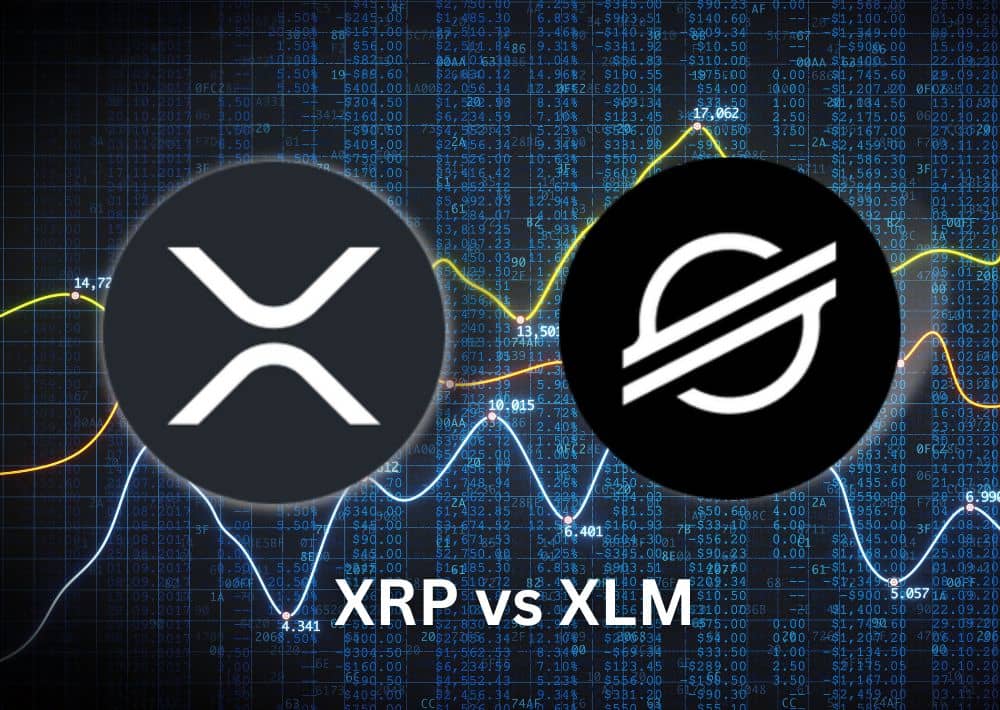
Ripple and Stellar are two cryptocurrency veteran projects that have been providing payment facilitation to crypto users for several years already. In this article, we compare XLM vs XRP and attempt to provide you with some advanced knowledge about their differences and similarities.
Additionally, we explore some precise predictions from internet analysts to see which one could be a more interesting investment.
How Does XRP Work?
Ripple Network is a payment facilitator that is aimed at financial institutions. This crypto network uses IOUs to allow these institutions to transact with any global currency over the network, increasing the efficiency and speed of cross-border transactions.
The XRP cryptocurrency is used to pay for the transactions on the network and serves as an asset for value transfers. However, instead of paying transaction fees on Ripple, a small portion of XRP is burned with each transaction.
XRP Price Forecast
Even though the XRP cryptocurrency has had some contentions with the SEC, analysts provide some bullish estimates.
Digitalcoinprice.com gives the following predictions:
- $0.91 for 2023
- $1.50 for 2025
- $4.32 for 2030
Keep in mind that if the SEC lawsuit turns in favor of XRP, these numbers could be doubled.
How Does XLM Work?
Stellar is a similar platform to Ripple, as it allows users to send tokenized assets over its network. As such, it allows cheap and speedy cross-border transactions in XLM tokens or other assets.
The main difference is that Stellar is aimed at retail investors that don’t have access to banking services. Its goal is to bank the unbanked and allow them to access global financial services.
XLM Price Prediction
So, what do analysts think of the XLM price action in the future? Considering that the coin is currently trading around $0.09, Priceprediction.net provides the following forecasts:
- $0.16 for 2023
- $0.32 for 2025
- $1.97 for 2030
This is similar to the growth ratios provided by their colleagues for XRP.
What Makes XRP Different From XLM?
Although XRP and XLM networks might seem similar at first glance, they have some differentiating factors.
Accessibility
As we mentioned earlier, Ripple is specifically designed to cater to financial institutions. This includes banks, hedge funds, and governments. Stellar, on the other hand, is aimed to serve the average Joe who wishes to transfer value across borders cheaply and efficiently.
Inflation and Deflation
XRP is a deflationary currency, as a small portion of the tokens is burned with each transaction. Conversely, XLM has a fixed inflation rate of 1% per year, which ensures a continuous flow of tokens into the market.
Distribution
More than 90% of the XLM token was initially distributed to the public. On the contrary, XRP was distributed to insiders and major investors in private sales. This has caused multiple issues for Ripple with regulating bodies. Also Read – Ways to make money with cryptocurrency
XRP vs XLM: Similarities
That being said, Ripple and Stellar still conserve some similarities.
Coin Limits
They both have a capped maximum supply. XLM has a max supply of 50,001,806,812 tokens, whereas XRP is capped at 100,000,000,000.
Fees
The transaction fees of both networks are near-negligible. A transaction fee on Ripple costs around 0.00001 XRP. About the same amount of XLM is required to transact on the Stellar network. If you’re interested in more coins with negligent fees, check out Cardano: https://godex.io/exchange/btc-to-ada.
Transaction Time
The transactions on both the Ripple and Stellar networks are extremely fast. They aim to provide an experience similar to fiat payment networks, so finality is reached within 5 seconds with both XRP and XLM.
What Is a Better Investment?
Both XRP and XLM have their advantages and drawbacks. They are also aimed at different types of customers, with Ripple targeting banks and Stellar targeting everyday users.
This means that Ripple might have a better potential for price action, whereas Stellar is stronger regarding mass adoption. If you are wondering which one is the best for you, follow the fundamentals and pick either one — you can’t go wrong.
